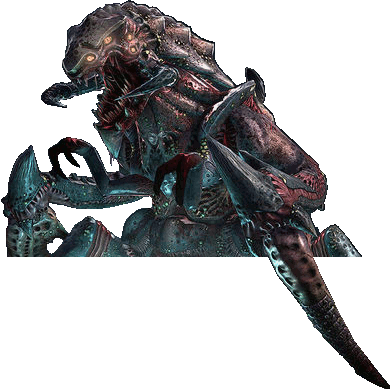Stories/TimeLine
From Unvanquished
< Stories
Originally from https://forums.unvanquished.net/viewtopic.php?f=8&t=331
Hey everyone. So, I'd like to get started on actually finalizing the setting for Unvanquished. I need to do that if I'd like to write out a formal background story! If you've missed it in a recent blog post, I wrote out a timeline for the game universe. I'm open to suggestions, comments, and criticism. Here is everything I have so far, and if I get any good advice in this thread, I'll edit this:
Unvanquished Timeline
- Human civilization achieves some sort of planet-wide unification. It isn't entirely peaceful, there's some resentment about the loss of national identity, but over the successive generations, some of the grumbling fades away. A few rebellions happen at some points during the process, and the way that they're handled might give hints to some sort of authoritarianism being involved. I'd like to leave that part open to interpretation. The unified human government can be viewed as benevolent, but with sinister dictatorial undertones.
- Scientific progress continues at an accelerated pace, aided in some regards by the era of enforced planetary peace. New technology allows for a variety of things, including rudimentary nano-fabrication, nuclear fusion, mass-produced clones, and artificial intelligence. Clones are ultimately favored over humanoid machines, as they're easier to maintain, cheaper to produce, and do not run the risk of going rogue. Alternatively, the usage of robotic soldiers might have created widespread outrage and fear, similar to the usage of nuclear weapons. Thus, they have been forbidden from combat roles, as humans ultimately decide that only humans are permitted to kill other humans, not sentient machines.
- Humanity begins to spread throughout the solar system, colonizing planets, moons, and the occasional dwarf planet. Technology for terraforming does not exist yet, so early colonists are required to live under domed settlements. They come with labor clones, who have been modified to be fully functional under harsh environmental conditions that would otherwise kill an unprotected human. A few machines are also brought along on expeditions, but as colonists do not have the means to produce more of them, they are outnumbered by labor clones.
- Once humans have spread to all remotely habitable locations in the solar system, research into wormhole physics ultimately results in the creation of new spaceship engines that can travel entire lightyears in the span of a single day. Early experiments result in absolute disaster, as unfortunate test pilots repeatedly meet gruesome fates. Ultimately, the technology reaches a point where extremely powerful computers can calculate safe routes, and the first trips are made to nearby stars, where humans set up their first outposts beyond the solar system.
- A network of wormhole routes are discovered through trial and error, allowing humanity to expand cautiously through the galaxy. Sentient alien life is not discovered, providing an eerie emptiness to humanity's expansion. Human colonies are entirely dependent on assistance and trade with Earth, providing the home planet with valuable minerals otherwise depleted by centuries of mining, while new colonists are sent to populate and expand the settlements. Some new worlds become powerful in their own right and send out colonial expeditions of their own, but are kept in check by the central authority on Earth. Terraforming is gradually introduced, and some promising planets are made hospitable, eliminating the need to wear protective suits and live under domes. Other planets are left barren.
- Ultimately, aliens are encountered. The first contact is hostile, and they appear to be approaching from multiple directions. One colony is completely wiped out, and does not respond to communication broadcasts. Before an expedition is sent to investigate, several others send out distress signals. News quickly spreads through the human systems, which find themselves beginning to panic. A power struggle on Earth results in humanity's frontier being left unprotected, as opportunistic military factions attempt to wrest control from the civilian government, promising a proper response to the alien menace in a clear attempt at seizing total control. Travel to and from the solar system is prevented by a military blockade as Earth descends into chaos.
- Abandoned and hopeless, the defenseless frontier is besieged by the onslaught of the alien menace. Pooling their meager resources together, the dominant frontier worlds begin to raise armies, an act forbidden in the past due to the iron grip of Earth. Some lucky colonists are evacuated to established systems, although millions die horrendous deaths in the initial weeks of the conflict. The aliens approach rapidly and in increasingly larger waves, with no sign of stopping. Resources stretched thin, the newly created frontier governments at last make a decision to send in the clones. Created in massive numbers, they are given their nano-fabricated environmental suits, a stockpile of cheaply produced weaponry, and shipped off to hot combat zones.
- Present day. The clone armies achieve some degree of success, and manage to maintain a stalemate with the alien menace. Yet, in addition to sightings of increasingly powerful alien forms, there is utter silence from Earth. Rumors abound of a new imperial government, one that is currently in the process of reconstructing the human presence in the war-ravaged solar system. If the rumors are true, the frontier governments fear an ascendant Earth, one that would not take kindly to the military strength of its old colony worlds. Banding together for protection, the new Alliance of Frontier Worlds administrates the periphery of human space, a ring of colony systems surrounding the fringes of early human expansion. Facing threats of alien destruction and imperial reprisal, the clone armies fight onward into an uncertain future.

